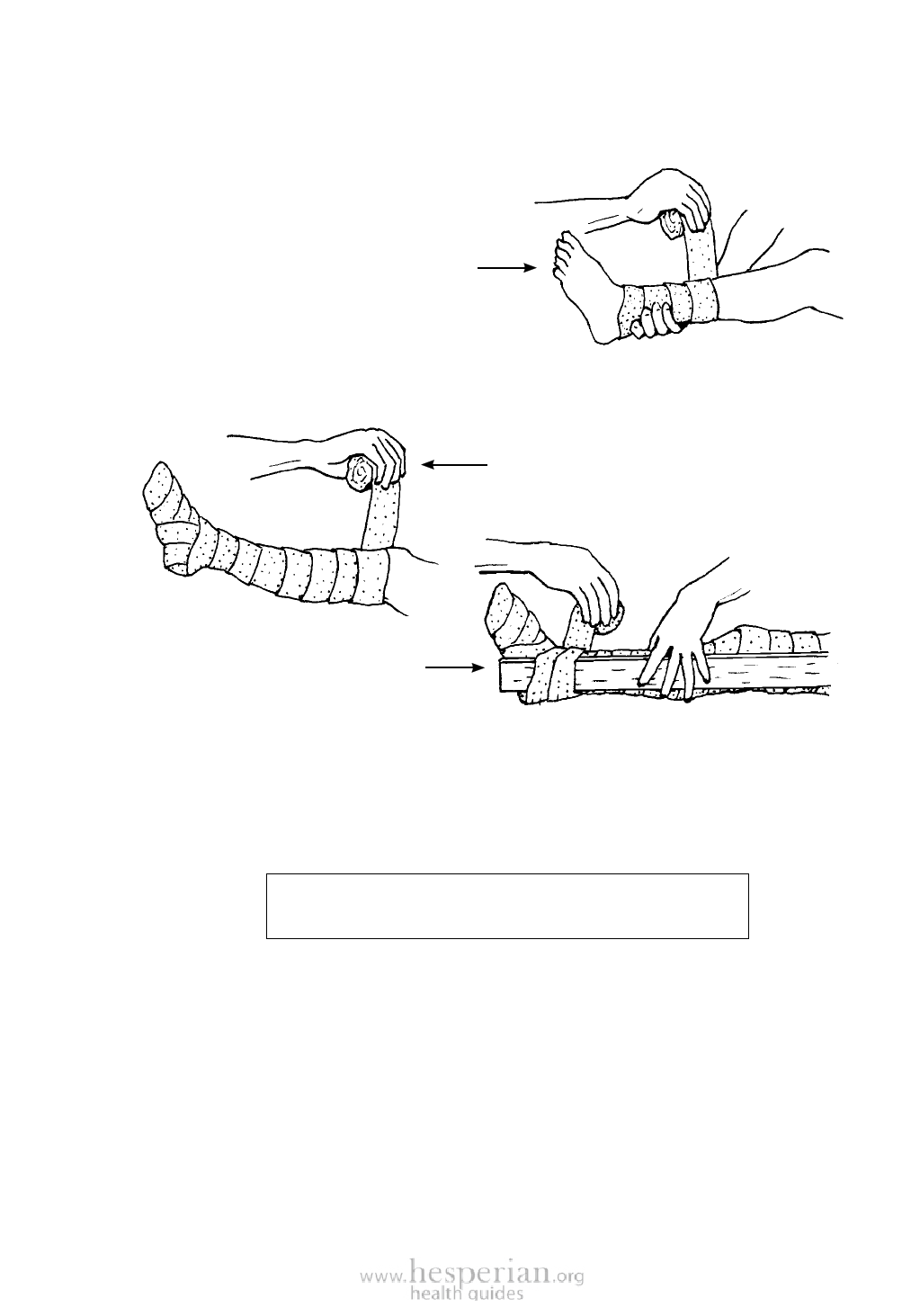
Where There Is No Doctor 2011 105
Treatment for poisonous snakebite:
1. Stay quiet; do not move the bitten part. The more it is moved, the faster the
poison will spread through the body. If the bite is on the foot, the person should not
walk at all. Send for medical help.
2. Remove jewelry because swelling
can spread rapidly.
3. Wrap the bitten area with a wide
elastic bandage or clean cloth to slow the
spread of poison. Keeping the arm or leg
very still, wrap it tightly, but not so tight
it stops the pulse at the wrist or on top
of the foot. If you cannot feel the pulse,
loosen the bandage a little.
4. Wind the bandage over the hand
or foot, and up the whole arm or leg.
Make sure you can still feel the pulse.
5. Then, put on a splint to prevent
the limb from moving (see p. 14).
6. Carry the person, on a stretcher if possible, to the nearest health center.
If you can, also take the snake, because different snakes may require different
antivenoms (antitoxins, see p. 387). If an antivenom is needed, leave the bandage
on until the injection is ready, and take all precautions for ALLERGIC SHOCK
(see p. 70). Also give tetanus antitoxin (p. 388). If there is no need for antivenom,
remove the bandage.
Have antivenoms for snakes in your area ready and
know how to use them—before someone is bitten!
Poisonous snakebite is dangerous. Send for medical help—but always do the
things explained above at once.
Most folk remedies for snakebite do little if any good (see p. 3).
Some treatments can cause infection or make the effects of the venom worse.
Do not:
• cut the skin or the flesh around the bite
• tie anything tight around the bite or the person’s body
• put ice on or around the bite
• shock the person with electricity
• try to suck the blood or the venom out of the bite
Never drink alcohol after a snakebite. It makes things worse!